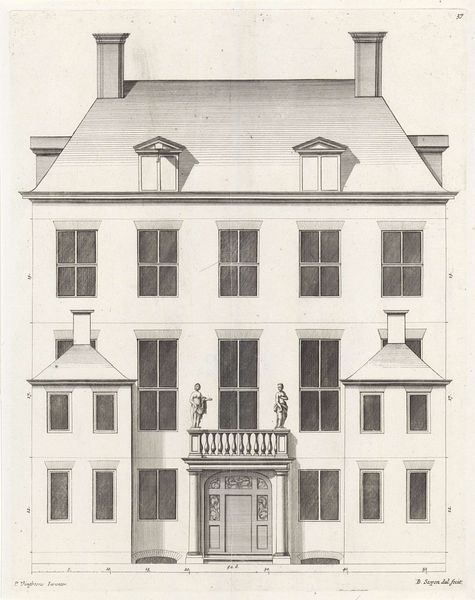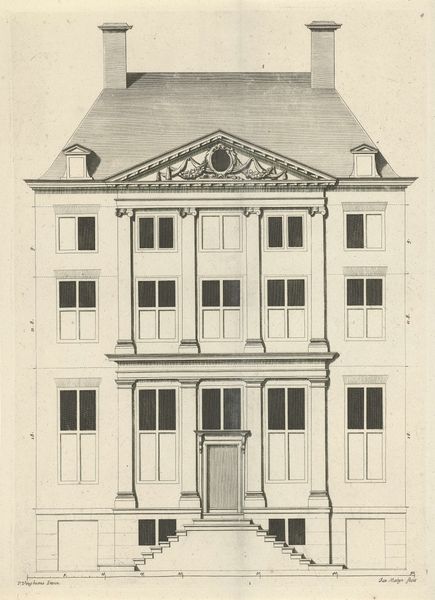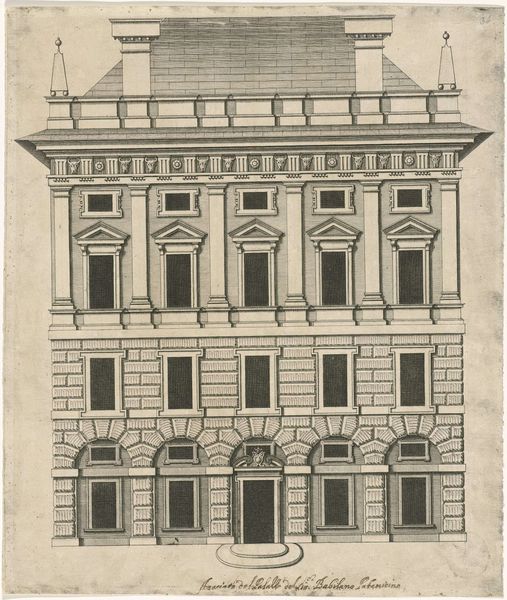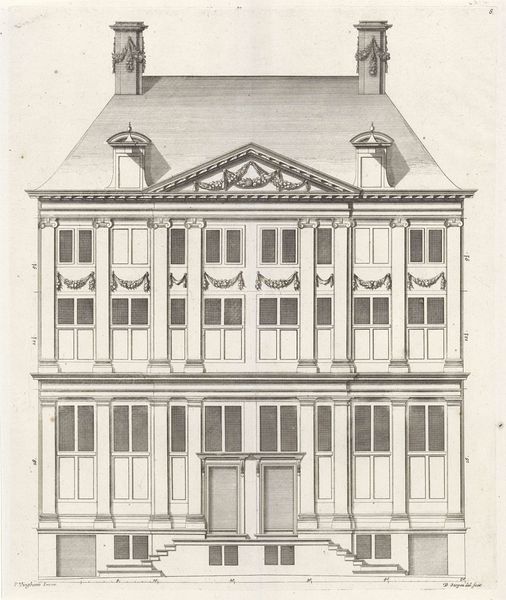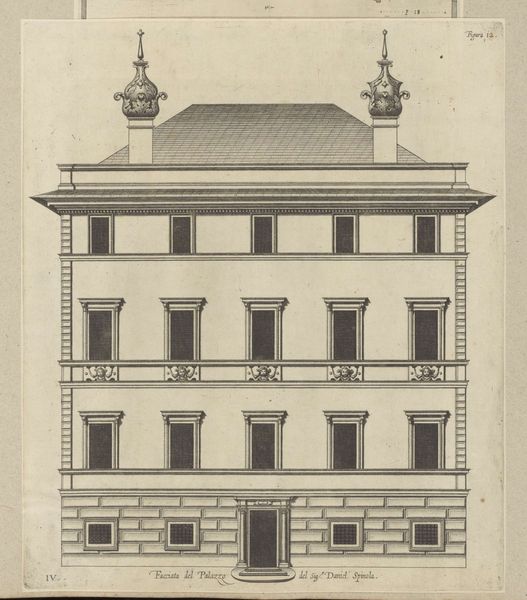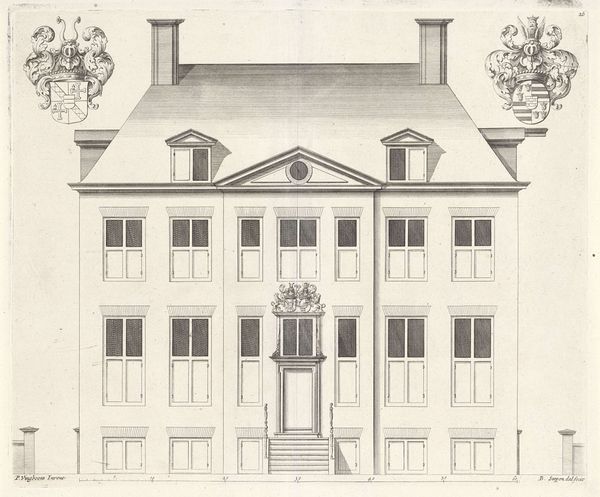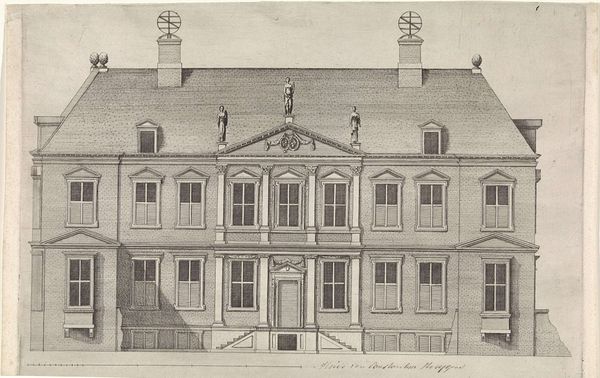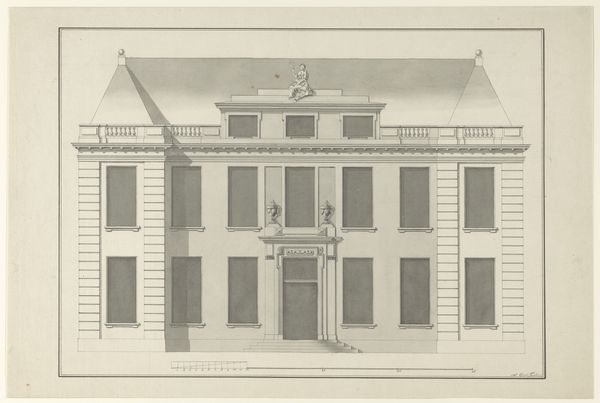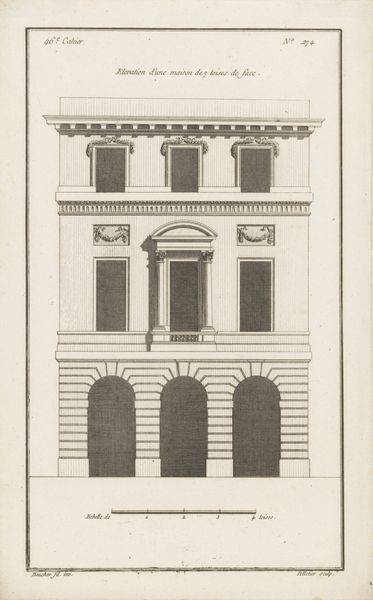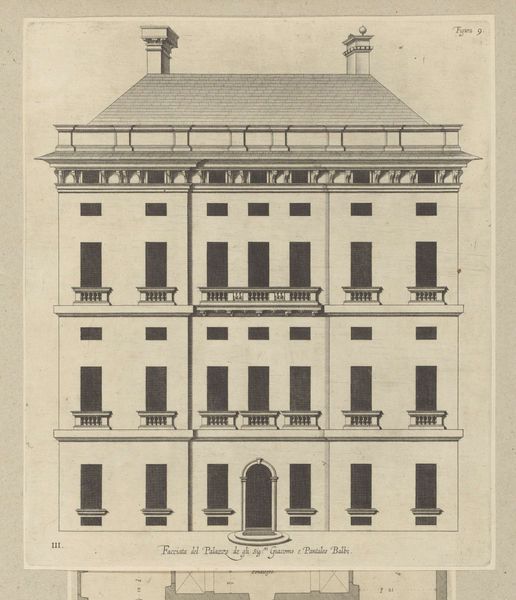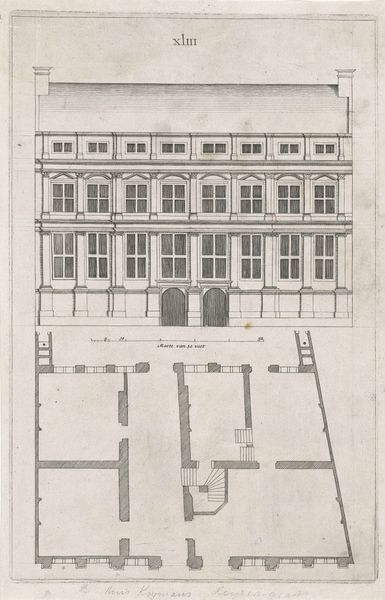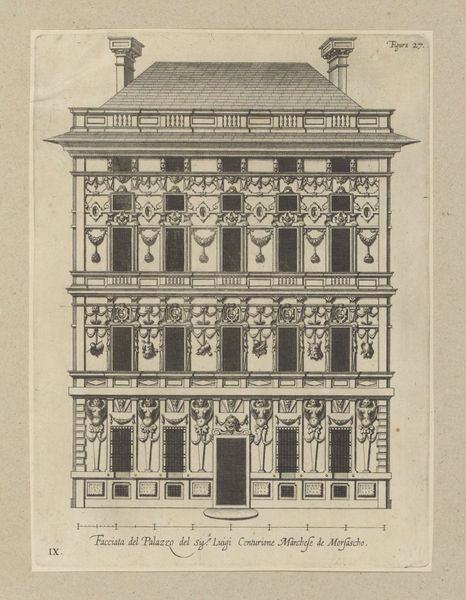
Voorgevel van een woonhuis aan de Keizersgracht te Amsterdam 1674
0:00
0:00
bastiaenstopendael
Rijksmuseum
drawing, engraving, architecture
#
drawing
#
baroque
#
old engraving style
#
cityscape
#
engraving
#
architecture
#
realism
Dimensions: height 369 mm, width 286 mm
Copyright: Rijks Museum: Open Domain
Curator: Here we have Bastiaen Stopendael’s “Facade of a House on the Keizersgracht in Amsterdam,” created in 1674. Look at the intricacy. Editor: Immediately, it feels austere, yet there’s a real beauty in that precision. Almost mathematical. The pale shades make me think of long winters, secrets behind those barred windows. Curator: Well, it *is* an architectural rendering. Stopendael captured this façade with such detail—look at the brickwork he's described through engraving, you could almost build it yourself, knowing the material ratios and processes. The paper itself must've been high quality to withstand such close labor. Editor: Right, there’s such an interesting contrast, isn’t there? This very solid, expensive house, meticulously planned… rendered on delicate paper. It's as if the artist wanted to capture its presence for posterity. Almost feels melancholic, like he knows it won't stand forever, or those who live there might fade. Curator: And in a way, he did grant it immortality. Through the relatively new technology of reproducible engraving, it could live on long beyond brick and mortar's life cycle. Editor: It's fascinating to think about the socioeconomic implications too; who owned this house, what sort of work financed such a building? Engraving became another extension of mercantile interests. What labor underwrites its existence, both building and reproducing its image. Curator: Absolutely, and Stopendael’s attention doesn’t just highlight the architectural details; it points towards the status and aspiration that owning such a home represented at the time, especially along the Keizersgracht. Editor: Though even as I see its function as an aspirational depiction of wealth, its formal presentation brings out this slightly ghostly essence in my view, its delicate shading hinting at fragility, the shadows behind the barred windows making it feel strangely uninhabited despite its imposing facade. Curator: In essence, it exists now, perhaps, outside time and location. We get to see the details of daily life centuries gone by captured with astounding patience and precision. Editor: Indeed. A record of how we attempt to create lasting impact from temporary matter. It encourages me to wonder what homes from our era will look like to those observing them from similar vantage points in the future.
Comments
No comments
Be the first to comment and join the conversation on the ultimate creative platform.
